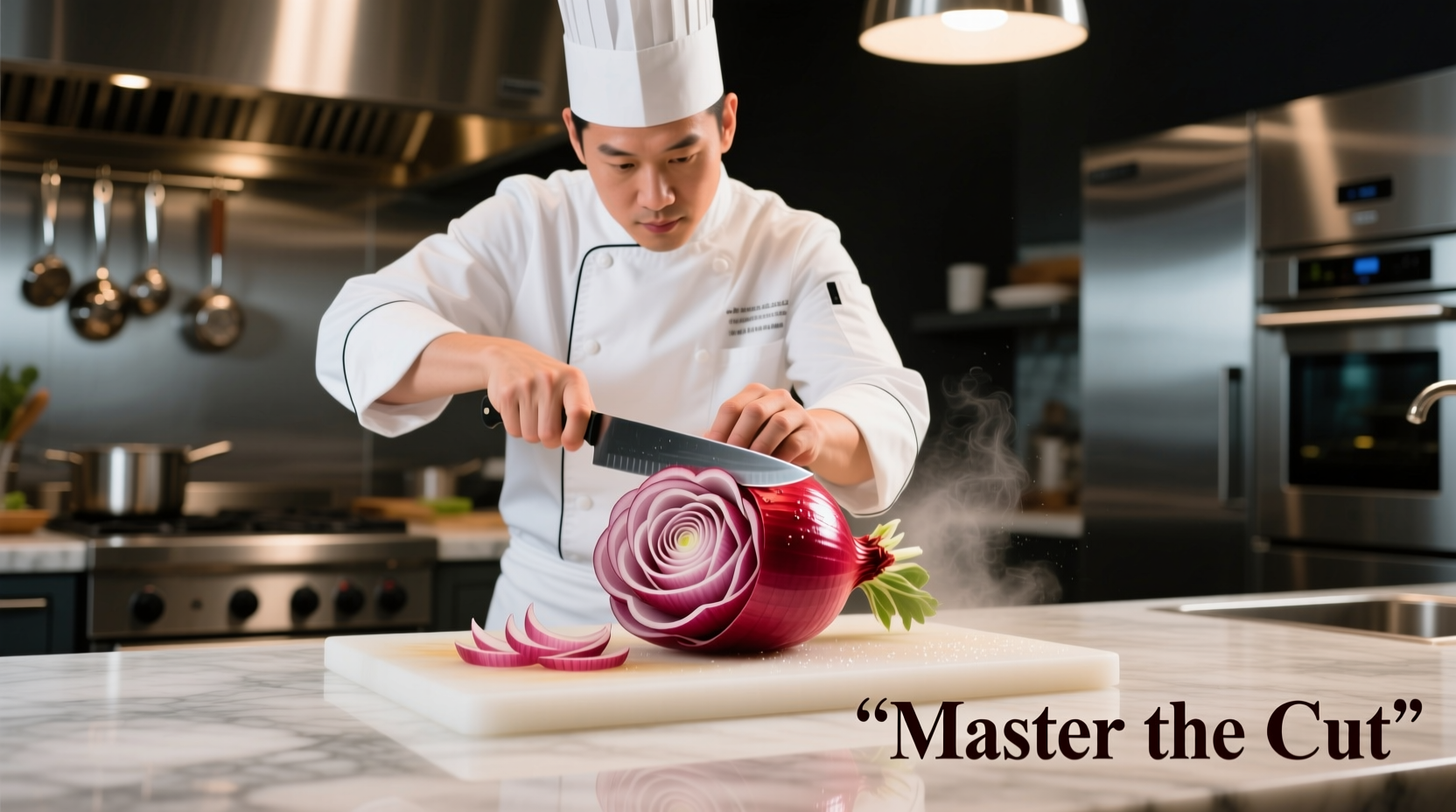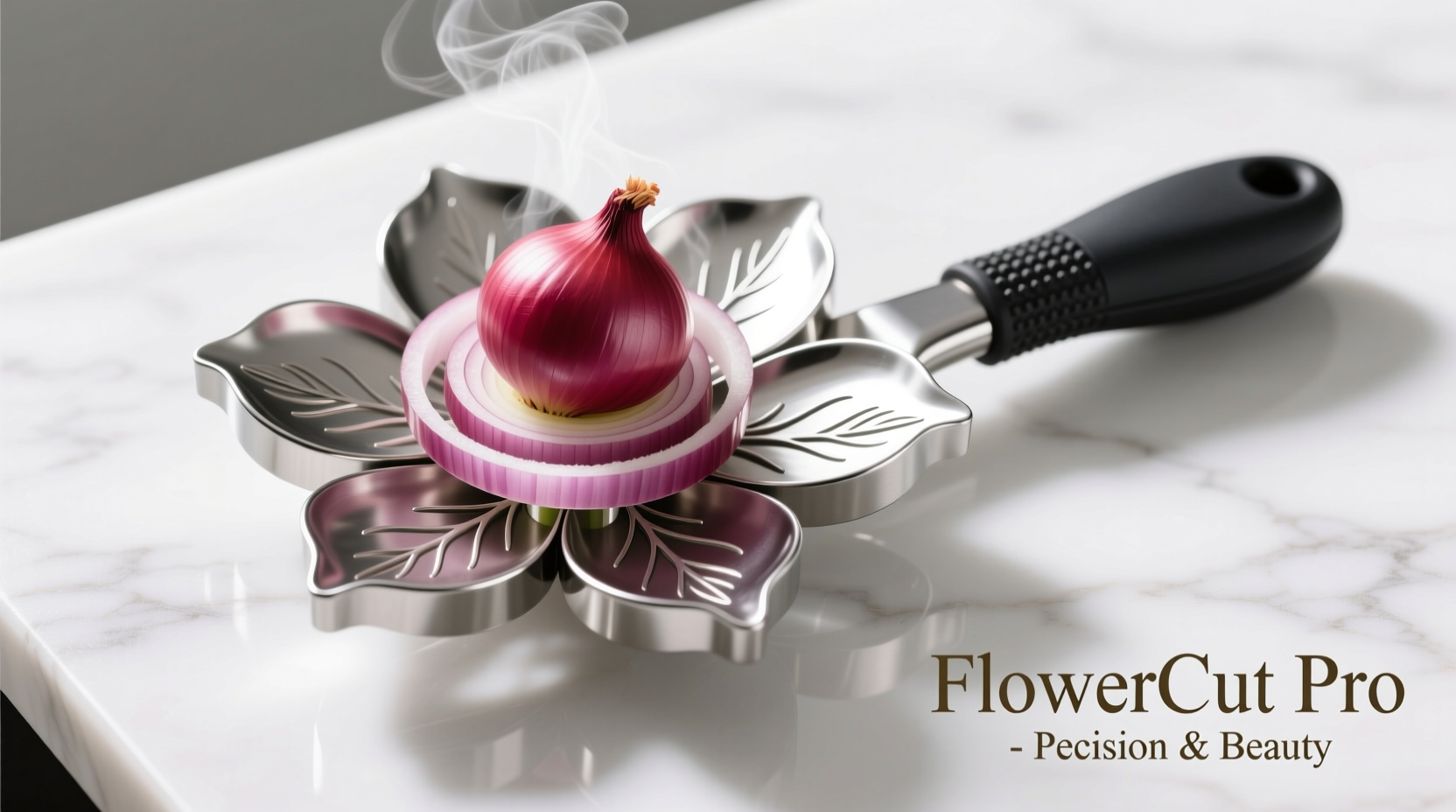Why Decorative Onion Cutting Matters in Modern Cooking
Professional chefs and home cooks increasingly recognize that 85% of dining satisfaction comes from visual presentation before the first bite, according to culinary research from the Culinary Institute of America. Flower onion cutting represents one of the most accessible techniques for elevating everyday dishes through thoughtful food styling.
Understanding Flower Onion Cutters: Beyond the Hype
Despite their specialized appearance, flower onion cutters serve a practical purpose in food preparation. These tools typically feature multiple parallel blades arranged in specific patterns that create consistent, even slices when pressed through an onion. The resulting "flower" effect occurs naturally as the onion layers separate after cutting.
| Onion Variety | Flower Cutting Suitability | Best Season | Flavor Profile |
|---|---|---|---|
| Vidalia | ★★★★☆ | Spring | Sweet, mild |
| Yellow Storage | ★★★★★ | Year-round | Balanced pungency |
| Red Onion | ★★★☆☆ | Summer-Fall | Sharp, vibrant |
| Shallot | ★★☆☆☆ | Fall-Winter | Delicate, subtle |
The Evolution of Vegetable Carving Techniques
Decorative vegetable cutting has roots in ancient culinary traditions:
- 12th century: Japanese chefs developed mukimono (vegetable carving) for ceremonial presentations
- 16th century: European royal kitchens incorporated elaborate vegetable arrangements
- 1980s: Modern "food styling" emerged as television cooking shows gained popularity
- 2010s: Specialized tools like flower onion cutters became accessible to home cooks
Mastering the Flower Onion Technique: Step-by-Step
Follow these professional techniques to achieve perfect flower onions every time:
Tool Selection and Preparation
Choose firm, medium-sized onions with tight layers. Larger onions often have looser layers that won't hold the flower shape. Chill onions for 30 minutes before cutting to reduce tearing and maintain structural integrity during the cutting process.
Using a Dedicated Flower Onion Cutter
- Remove the onion's top and root ends
- Peel the outer skin while maintaining the onion's structural integrity
- Place the onion in the cutter with the root end down
- Apply firm, even pressure through the entire onion
- Transfer the cut onion to ice water for 10-15 minutes to allow layers to separate into the flower shape
Manual Technique Without Specialized Tools
When you don't have a dedicated cutter, create similar effects with these steps:
- Make 4-6 vertical cuts from top to bottom, stopping 1/2 inch from the root end
- Rotate the onion 90 degrees and repeat the cuts
- Soak in ice water for optimal bloom effect
- For more intricate patterns, vary the depth and angle of your cuts

Practical Applications in Everyday Cooking
Flower onion cuts serve both aesthetic and functional purposes in various culinary contexts:
When to Use Decorative Onion Cuts
- Appetizers: Perfect for topping crostini, bruschetta, or seafood presentations
- Main dishes: Enhances grilled meats, stir-fries, and rice bowls visually
- Cocktail garnishes: Creates dramatic presentation for Bloody Marys and other savory drinks
Contextual Limitations to Consider
While visually impressive, decorative onion cutting isn't appropriate for all situations:
- Avoid using flower-cut onions in dishes requiring long cooking times (the delicate structure collapses)
- Not recommended for recipes where uniform cooking is essential
- Less practical for large batch cooking due to time investment
- May not be cost-effective for everyday family meals
Safety and Maintenance Best Practices
Specialized cutting tools require proper handling:
- Always use a stable cutting surface with non-slip properties
- Clean cutters immediately after use to prevent onion residue buildup
- Store in protective cases to maintain blade sharpness
- Replace plastic cutters every 12-18 months as material degrades
- Never attempt to sharpen the blades yourself—most are designed as disposable components
Creative Variations for Culinary Enthusiasts
Expand beyond basic flower shapes with these professional techniques:
- Layered presentations: Alternate onion varieties for color contrast
- Infused blooms: Soak cut onions in flavored liquids (vinegar, citrus juice) for added dimension
- Multi-vegetable arrangements: Combine with carved radishes or bell peppers for centerpieces
- Temperature effects: Briefly blanch for softer, more dramatic blooms
Troubleshooting Common Flower Onion Issues
Even experienced cooks encounter challenges with decorative cutting:
- Problem: Onion doesn't bloom properly
Solution: Increase ice water soaking time or use fresher onions - Problem: Layers separate too much
Solution: Reduce soaking time or use slightly less firm onions - Problem: Uneven cutting pattern
Solution: Apply more consistent pressure through the cutter - Problem: Onion turns brown quickly
Solution: Add lemon juice to soaking water











 浙公网安备
33010002000092号
浙公网安备
33010002000092号 浙B2-20120091-4
浙B2-20120091-4